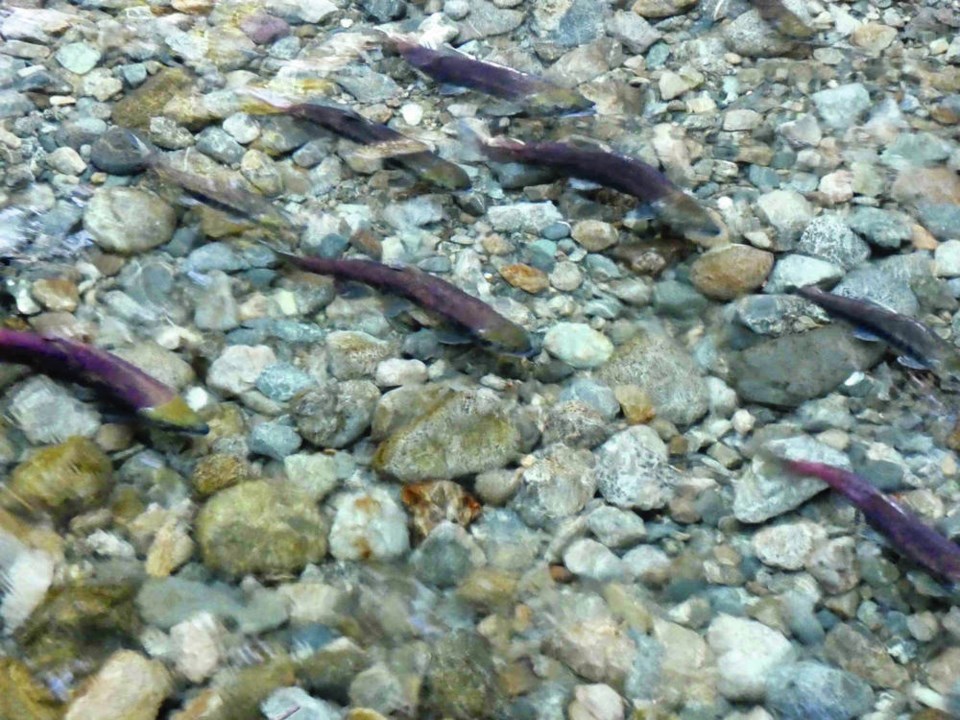Sockeye salmon returns to the Fraser River are forecast at 1.3 million this year — higher than the past two disastrous seasons, but still so low that fishing opportunities are not anticipated.
“There isn’t any expectation to harvest any of those fish,” said Fiona Martens, chief of fisheries management programs with the Canada-U.S. Pacific Salmon Commission.
The forecast of 1.3 million sockeye returning in the Fraser River beats out last year’s record low return of 293,000. The 2019 return set the previous low record at 485,000.
Numbers are not certain until the fish show up to spawn, usually starting in late June and into September.
“We’ll see what actually happens in-season,” Martens said.
Most returning sockeye will be four year olds, heading up the Fraser to their home streams after typically spending half their lives in fresh water and the rest in the open ocean.
This year is considered a weaker year among salmon cycles, Martens said. Next year is expected to have stronger numbers.
The commission also watches over pink salmon, which return every two years. This year, three million are predicted, she said.
Dane Chauvel, chair of the B.C. Salmon Marketing Council, said fishermen are looking ahead to 2022.
“Everybody’s just kind of hunkered down and will do what they can to get through this year in anticipation of knocking the cover off the ball in 2022.”
There will be some other salmon fisheries on the coast this year that will “hopefully be sufficient to keep the wolf from the door and enable the industry and the fishermen to stay solvent, be available and ready to fish next year,” he said.
Fraser River sockeye are important to First Nations for food, social and ceremonial purposes. The commercial and recreational fisheries sectors in B.C. counted on them for many decades.
But returns are variable.
The Fraser River averaged 9.6 million sockeye returns annually between 1980 to 2014, with up to 28 million one year.
Two Vancouver Island scientists are also predicting an increase in this year’s Fraser River sockeye returns, hoping that they’ve found a way to help forecast how many will head home to spawn.
“We think that the return in 2021 will be greater than in 2019 and 2020. We don’t know by how much or what the number will be,” research biologist Chrys Neville said .
The suggestion of stronger runs is based on the results of international trawl expeditions to the Gulf of Alaska in early 2019 and 2020. Neville presented on behalf of herself and fisheries scientist Richard Beamish at a three-day virtual Conference on the Winter Ecology of Pacific Salmon.
In early 2020, a higher number of Fraser River sockeye in their first winter at sea were caught in the survey, indicating that more may return this season, Neville said. She cautioned that the numbers caught were small and said more research is required.
Even so, if higher numbers return, “it may be first validation of using surveys as an early forecasting tool,” she said.
Bigger numbers this year would support the idea that the first winter at sea determines “brood year strength” — adults returning to spawn.
To make it through that first winter, fish must accumulate enough energy stores to survive and travel long distances, Neville said.
Another international survey of salmon is planned for early 2022.
Researchers aim to use knowledge gained to better manage stocks, predict salmon returns and develop early forecasts.



